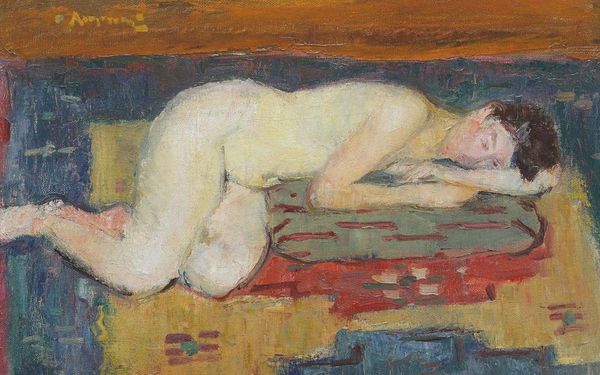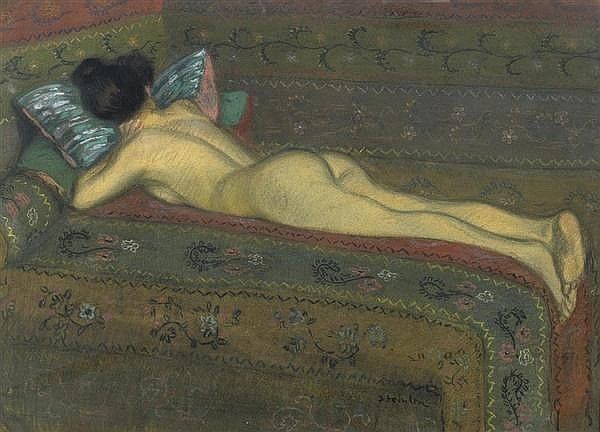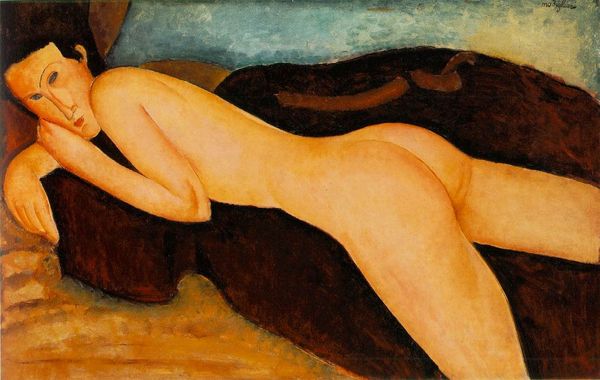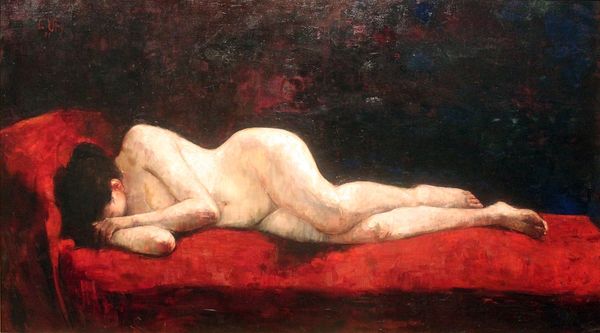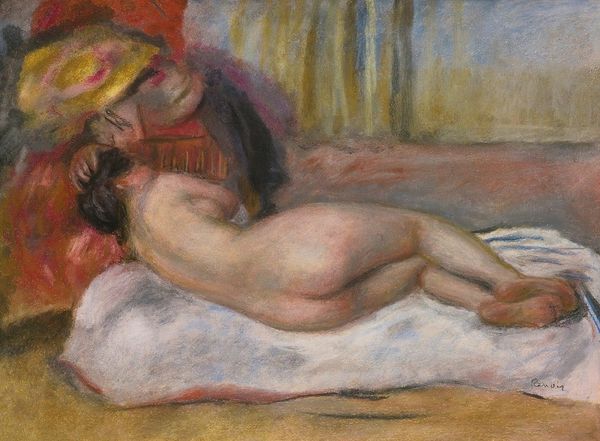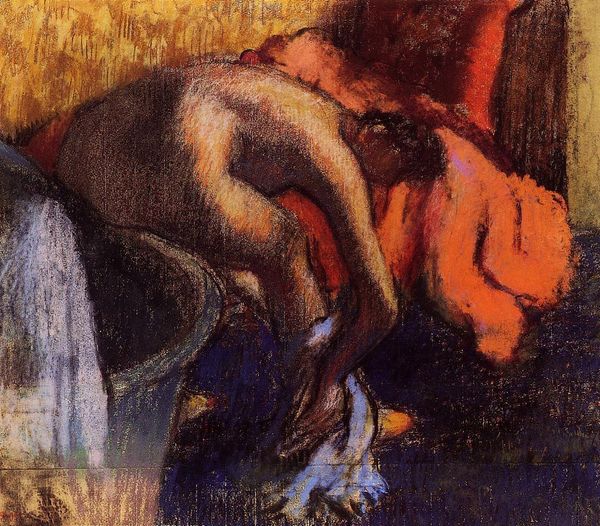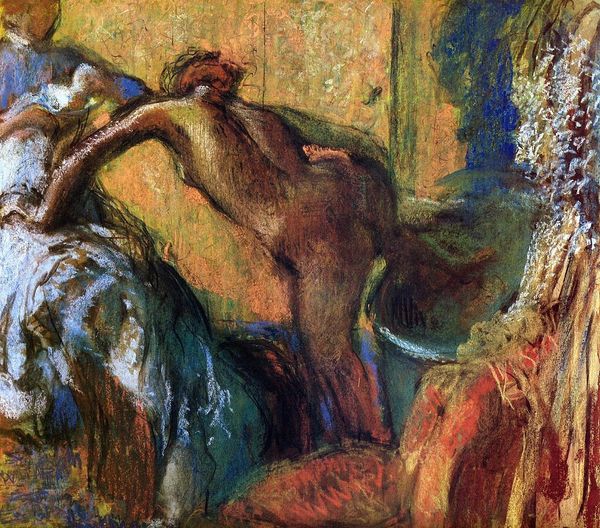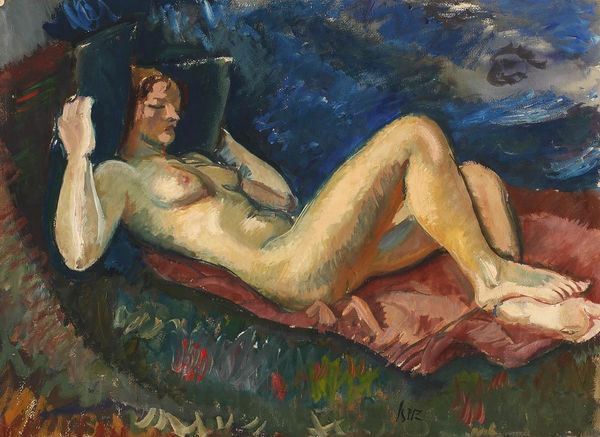
painting, pastel
#
painting
#
impressionism
#
figuration
#
oil painting
#
france
#
genre-painting
#
pastel
#
nude
Copyright: Public domain
Curator: Alright, let's consider Degas' "After the Bath," created around 1885, using pastel and oil. What's your first reaction? Editor: Hmm, prickly. I get this restless feeling from it. The texture is so raw, like she's lying on a bed of nails. Curator: That textural choice aligns with a shift occurring within Impressionism, one that acknowledges interiority and its relationship to bodily autonomy. Degas focuses on private moments of women, often, we must note, within a male gaze characteristic of his time, but the very focus shifts how we conceive these spaces and figures. Editor: I see it more as this… immediate experience, detached from typical portrayals. The strokes feel like catching a fleeting thought—less about showing her, more about sensing her, right? It's about the energy. Curator: Exactly. But we need to contextualize it; in Degas' time, paintings of nude women, particularly those coded as "genre scenes" rather than idealized nudes, were heavily charged. They reflected social anxieties around female sexuality and visibility within rapidly modernizing France. Editor: That makes it so interesting! Degas walks this line— he seems to observe, but not possess, with brushstrokes that deny traditional softness or an obvious idealization. There is this interesting tension about being there in the very instant after cleansing; not fully recovered, not idealized, very human. Curator: Think, too, about the broader feminist discourse, even in its early stages at this point. Degas positions this bather as existing apart from the formal societal spaces often associated with feminine social circles. There is, potentially, a subversion of the typical subject/object dichotomy present. The act of viewing is implicated. Editor: Definitely subversive, even in its subtleness. And for me, I feel like the strength of it resides there, in how unassuming it is. I imagine Degas in that room. Curator: Absolutely. The layering of sociopolitical, gendered, and intimate contexts makes even a simple pastel drawing of "After the Bath" become a rich object of discourse. Editor: Okay, now I can't stop thinking about that itchy blanket!
Comments
No comments
Be the first to comment and join the conversation on the ultimate creative platform.
